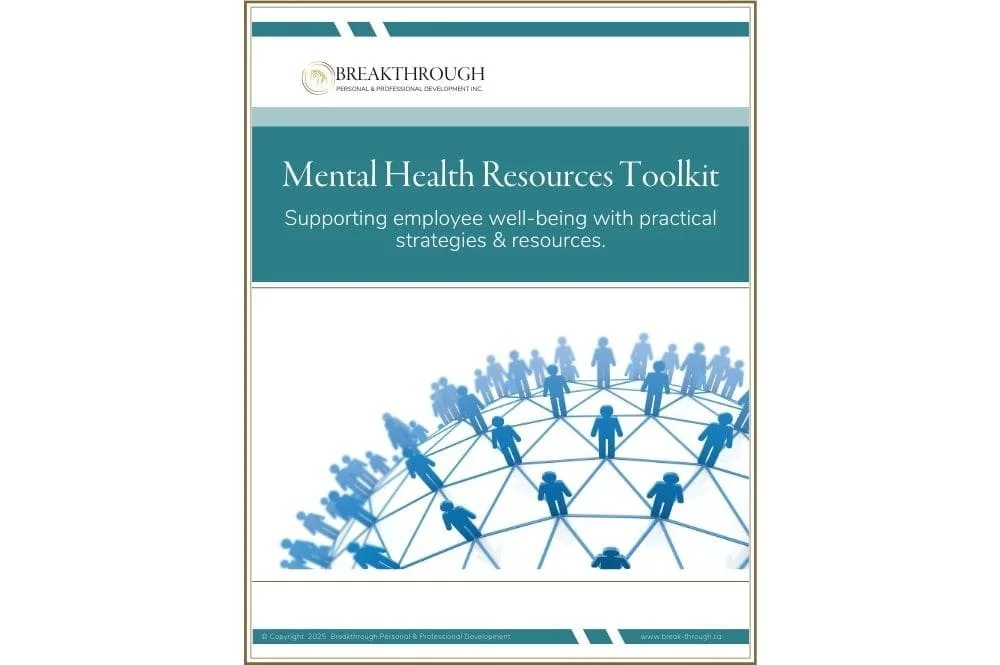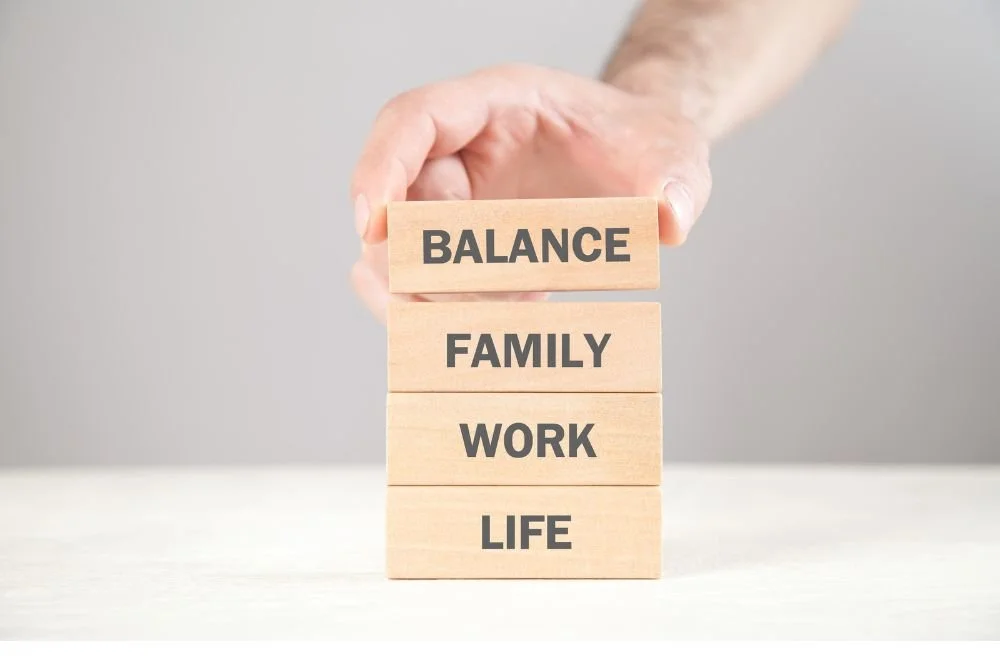A free burnout assessment for personal & organizational health
Whether you are looking for an effective tool for measuring your personal burnout risk or within your corporate, non-profit, or faith-based organization, the Burnout Assessment provides an effective tool. This robust assessment is evidence-based, encompasses a vast body of research, and helps identify a burnout experience.
The definition of burnout
The World Health Organization created the most commonly used definition of burnout. Specifically, the explanation labels burnout as an occupational phenomenon under the Classification of Diseases. 1
The WHO defines burnout as "a syndrome conceptualized as resulting from chronic workplace stress that has not been successfully managed. It is characterized by three dimensions: feelings of energy depletion or exhaustion; increased mental distance from one’s job, or feelings of negativism or cynicism related to one's job; and reduced professional efficacy. 2
Using the Burnout Assessment at work
The Burnout Assessment provides an effective tool for evaluating employee burnout risk, thereby providing a wealth of information to help prevent burnout on your team.
Protect your highest performers from burning out whether they work in-office, work from home, or enjoy a hybrid work model. High performers tend to be motivated by their work. However, autonomy around when, where, how, and what projects they work on is crucial to sustaining productivity and preventing a burnout experience.
Burnout is more than just a work-life balance issue. It reflects company culture priorities around workload, autonomy, reward, connection, equity and values. Employee wellness incorporates both a healthy workplace culture and personal self-care.
The first step is opening the conversation with employees about burnout. This assessment provides you with essential questions uncovering relevant information for understanding the strains and stress within your organization.
Learn what causes your employees the most significant stress so you can implement effective measures. This can positively impact employee well-being and increase productivity. Further, you can prevent costly leaves of absence and termination by stopping burnout before it happens.
Speaking openly about burnout in the workplace and naming the elephant in the room can foster psychological safety, so others are willing to reach out for the support they require to flourish.
Happy, healthy employees create healthy organizations that thrive.
Warning signs you may have burnout
Burnout refers to a state of emotional and physical exhaustion that results from unsuccessfully managed workplace stress. 3
A pioneering researcher and psychologist, Christian Maslach, named three dimensions of burnout that arise in response to chronic workplace stressors. These stressors are at the heart of occupational burnout.
1 Physical and mental exhaustion
The primary symptom of burnout is overwhelming exhaustion which can perpetuate physical signs and emotional fatigue. Exhaustion may present as a lack of physical energy, mental brain fog, feeling overwhelmed at work, or having no emotional reserves left for family or friends at the end of the workday. 4
2. Feelings of cynicism or negativity toward work
The second symptom is depersonalization, which may present as decreased engagement. According to Maslach's research, in the early stages of burnout, employees tend to distance themselves from their work, perhaps responding to emails more slowly, taking more time off work, or putting less effort into their work. 5
On the other hand, employees with particular personality types may push themselves harder, believing that with just enough work, they will move up the ladder or accomplish the objective they desire. These types tend to work themselves into the ground.
When employees lack the support they need from their employer or lack necessary psychological safety to speak with their manager about challenges, they often become cynical about their work and workplace. As a result, they may feel negatively toward their boss, coworkers or organization, causing conflict on the team. Or they may begin to lack focus on the organization's mission, vision, and values, which can lead to decreased performance.
At this stage, employees may feel disheartened or disillusioned with their work and consider resigning from their position.
3. Decreased performance or efficacy
Due to physical and mental exhaustion, disengagement, and other burnout symptoms, employees experiencing burnout can become less productive. As a result, they may find it more challenging to complete tasks or produce lesser-quality work. In addition, this loss of productivity can lead to reduced self-confidence, anxiety or feelings of shame or depression.
Notably, the more an employee can exercise personal freedom around decision-making, the higher the job satisfaction, engagement, and performance. Frequently, burnout is a direct result of workplace culture and conflicting values. 6
The symptoms of burnout
Many symptoms can persist due to the effects of burnout. Indications may include reduced immunity, brain fog, sleep disturbances, shame and guilt. To learn more about the signs of burnout, read more here.
Are burnout & compassion fatigue the same?
While there are similarities, Compassion Fatigue results from exposure to secondary trauma, also called vicarious trauma, which occurs when exposed to other people's suffering. 7,8,9
Does burnout affect mental health?
Work that lacks meaning, purpose and connection alongside low agency over goals and responsibilities creates a perfect storm for occupational burnout. In turn, negative implications can lead to physical, emotional, and mental health challenges. However, by understanding what causes your stress, or your employees' stress, you can prioritize change and implement practical solutions.
Burnout self-test
Burnout occurs when committed and passionate people lose their connection to their work due to chronic stress and disillusionment. As a result, their passion and enthusiasm dry up, and they may become disheartened and less productive.
The good news is burnout can be prevented and overcome. Moreover, there are many practical solutions to stop burnout and recover when necessary.
This Burnout Assessment tool is the first step toward recognizing your own burnout risk or the risk of your employees.
Burnout Assessment categories
This burnout measure gauges burnout risks in both the professional sphere as well as how work affects life outside of work.
The assessment evaluates workload, autonomy, reward, community, equity, and values in the professional sphere. The second half determines how work affects you physically, mentally, emotionally, spiritually, relationally and financially.
Questions in each category reveal areas of potential risk. For individuals, the results can help one determine what needs to change in order to achieve well-being and professional longevity. For organizations, the results can help managers and leaders assess and monitor the well-being of their employees while providing conversation starters related to wellness and efficacy.
Revised & updated Burnout Assessment
What has changed?
1. Easy to use.
The assessment is broken down into easy-to-read & easy-to-interpret sections.
2. New categories.
The assessment evaluates two key areas based on the latest scientific research. The first includes six factors known to accelerate burnout in the workplace: lack of workload, autonomy, reward, community, equity, and values in the professional sphere. The second half determines how work affects your health in six critical areas.
3. New questions.
The assessment is more robust, with 120 questions across 12 categories making evaluation that much easier.
4. Diversity and inclusion.
Equity questions have been added to evaluate employees' sense of fairness related to ethnicity, gender and faith.
5. New format.
Questions are divided into clearly divided sections so organizations can better interpret how company culture affects employees.
6. New scoring.
With newly revised categories, scoring and interpretation occur on three easy-to-understand planes. First is the overall score. The second is the score within each category. The third is recognizing red flags within any section.
Instructions for completing the Burnout Assessment tool
Once you have downloaded the Burnout Assessment, read through each question and answer to the best of your ability. Responses are on a scale of one to ten, with one representing “disagree” and ten representing “agree”.
Your assessment results and interpretation
It is essential to look not only at the overall single burnout score but also recognize which areas have lower scales. It is not uncommon to see someone who finds their workload manageable and reward adequate but is experiencing severe workplace stress in the areas of autonomy and equity, for example. Their level of burnout may be low in one area but high in another. Therefore, it is essential to look at overall scores for each category and zero in on specific areas in which you are experiencing unmanaged workplace stress.
While the Burnout Assessment is a resource for discovering unhealthy patterns of workplace stress and its effects on life outside of work, it is not a diagnostic tool and does not provide a diagnosis. The assessment is a guiding tool to understand the stressors that can cause job burnout and consider appropriate measures to reduce burnout levels. Please be advised to seek the advice of your medical doctor.
Support for those experiencing burnout
Several options exist to support organizations and individuals to prevent and overcome workplace burnout.
For organizations, it is essential to evaluate workplace culture to determine what, if anything, contributes to employee workplace stress. In addition, workplace wellness programs and employee assistance programs should include access to many healthcare professionals, counselling and coaching.
Training for leaders and managers to understand the symptoms of burnout and have meaningful conversations with employees is essential to burnout prevention.
Individuals may approach their manager to discuss their assessment results and negotiate options for supporting their well-being while remaining in their current role or shifting to one that fits their strengths more appropriately. Additionally, getting quality support from a knowledgeable coach or counsellor and implementing self-care measures can lead to a rewarding career while sustaining their well-being.
Disclaimer: The Burnout Assessment does not provide a diagnosis. The scores do not attempt to reflect a prognosis or course of treatment. Instead, the assessment is a tool to help assess burnout potential using a series of questions. If you have concerns about your health, well-being or mental health, please consult your medical doctor.
Download your free Burnout Assessment







